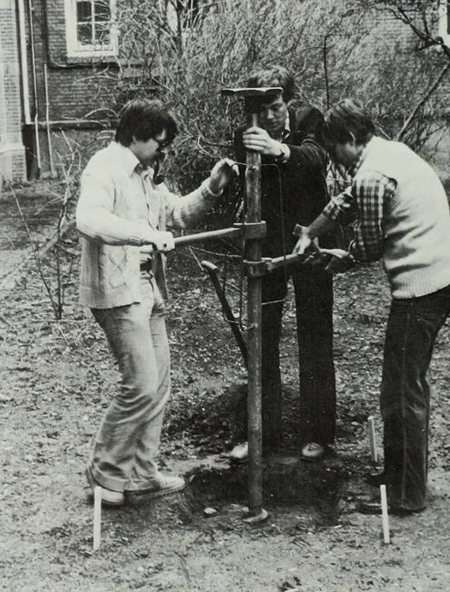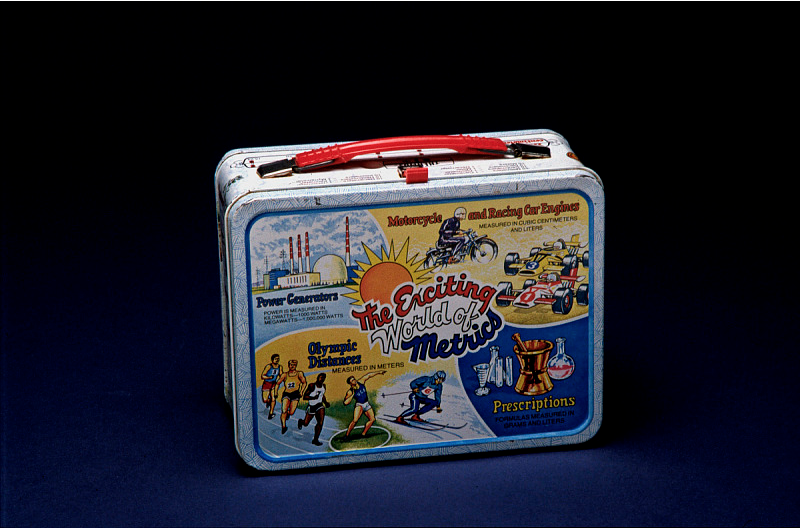Science
Fanta Pomelo Ad and Sequel
Posted By: Paul - Tue Sep 21, 2021 -
Comments (0)
Category: Aliens, Humor, Science, Advertising, Twenty-first Century
Aluminum Al
In 1952, scientists at the General Electric Research Laboratory in Schenectady created the aluminum version of a Chia Pet. They called him "Aluminum Al".Source: Google Arts and Culture

Posted By: Alex - Mon Sep 13, 2021 -
Comments (1)
Category: Science, 1950s, Hair and Hairstyling
Butt Breathing Tubes
Recent studies suggest that it may be possible to supply oxygen to patients via a "butt breathing tube" rather than by the traditional tube down the throat. This new technique is also known as "enteral ventilation via anus". Caleb Kelly, in the journal Med (Jun 11, 2021) notes:The key to the technique is the use of an oxygen-saturated perfluorocarbon solution that can deliver enough oxygen to make it through the mucus membrane of the intestines and into the blood.
The technique has been demonstrated successfully on mice, rats, and pigs, but not yet on humans.
Josh Bloom, on the American Council of Science and Health site, observes:

image source: The Scientist
Posted By: Alex - Sat Sep 04, 2021 -
Comments (2)
Category: Science, Experiments
The Penile Plethysmograph
I had to post this item today, to accompany Alex's "pot-sex" post, only because how often does one get to use the great word "plethysmograph?"
Posted By: Paul - Sat Jul 31, 2021 -
Comments (1)
Category: Medicine, Science, Sexuality, Technology, Genitals
International Stop Continental Drift Society
The International Stop Continental Drift Society (ISCDS) was founded in 1976 by geologist John Holden with these demands: "the continents to stop moving, the sea floor to stop spreading, and such inconveniences as major earthquakes and volcanic eruptions to cease immediately." Its motto was "Eschew Sea-Floor Spreading." It also issued a newsletter that "like natural disasters will appear without warning".By 1981 it had grown to 300 members. Mostly fellow geologists. However, Holden admitted, "So far, our demands have not been satisfactorily met."
By the mid-1980s it seems to have faded away. Although it does have a Facebook page (set to private) with 154 members.
More info: Science Year 1982, lgvweb.nl


"Dutch geologists drive a giant screw into the ground at Leiden, The Netherlands, in an attempt to stop the Eurasian tectonic plate from moving. The scientists are members of the International Stop Continental Drift Society whose purpose is to put some stability in the earth's crust."

Jack Holden - founder of the ISCDS
Longview Daily News - Sep 15, 1981
Posted By: Alex - Sat Jul 03, 2021 -
Comments (0)
Category: Clubs, Fraternities and Other Self-selecting Organizations, Humor, Science
Whole-Mouse Homogenizer
This scientific ad has been doing the rounds for a long time. (Dave Barry discussed it in a 1993 column). But I only found out about it recently.No idea what the original source was.
via Improbable.com

Posted By: Alex - Sun May 16, 2021 -
Comments (9)
Category: Science, Advertising
Why the man of the future may have only one eye
1927: Scientist W.E. Bailey predicted that, in the far future, our descendants may have only "one large, central, cyclopean eye".Of course, who knows what humans may look like in a million years (if there are even any of us still around), but his argument sounds plausible enough to me (with my limited knowledge of neuroscience). Basically he argued that, over the past several million years, our brains have devoted more space to speech, and less to vision. Extrapolating that trend into the future, he concluded that the eventual merging of our eyes into one would be a more efficient use of the brain's resources, and so will probably happen.

Minneapolis Star Tribune - Dec 4, 1927
"Man's field of view," writes Mr. Bailey, "will become smaller and smaller. This, because his need of a wide field is growing less and less. This I say with full realization that we live in an age of automobiles, and that these vehicles render desirable a wide field of view. The automobile is probably a very transitory phenomenon. I even believe that, in the course of countless ages, the two human eyes will come closer together, the bridge of the nose will further diminish and sink (just as the animal snout, in man's line of descent, has been doing for vast aeons of time) and, finally, man's two eyes will again become one—just one large, central, cyclopean eye.
"It is likely that the merely servient (left) eye will shrink away (as the pineal eye has already done) so that the right eye will become the cyclopean. Certain it is that the left eye, even today, is being used less and less continually. Man's binocular and stereoscopic visions are being destroyed. That is the price he pays for his speech center.
"The great cyclopean eye, however, will regain stereoscopic vision by developing two maculae in the one eye, just in the fashion in which many birds have stereoscopic vision in each eye now. Although the field of view will then be narrower than now, the eye will probably be microscopic and telescopic; it will be exceedingly acute for colors, for motion, and for form; and finally, most important of all, it will probably be able to perceive as light many forms of energy which now produce in human eyes no sort or kind of perception.
"Because of the development of a speech center in man, there has come about what is called dominancy and serviency in human eyes, a phenomenon not found in other mammals. This means that, in the human, the brain does most of the seeing through one eye, even when both eyes are open. Dr. Thomas Hall Shastid, ophthalmologist of St. Luke's Hospital, Duluth, has found that from 95 to 100 per cent of the detail of any object comes through the right eye if the person be right-handed; while if the person be left-handed the left eye as a rule, but not always, takes up the major part of the detail. This condition, which he has been unable to observe in any other animal, may eventually result in consequences of vast importance to humanity."

Posted By: Alex - Sat Apr 17, 2021 -
Comments (5)
Category: Science, Anthropology, 1920s, Eyes and Vision
Armpit Reading
Useless Superpower: In the 1970s, Chinese researchers investigated reports of children who had the unusual ability to read with their armpits. The kids supposedly could describe what was written on folded pieces of paper tucked beneath their armpits. And not just their armpits. Some kids could see with their ears, hands, or feet.After careful study, the researchers concluded that, yes, the children did seem to have this ability.

Edmonton Journal - Feb 15, 1980
The researchers published the results of their study in Nature Magazine, which is a Chinese journal not to be confused with the British journal Nature. Thanks to the U.S. military's translation service, you can read these articles in English. They're posted on the website of the Defense Technical Information Center. Here's a sample:
Therefore, other pieces of paper were written on in another room by Shen Hanchang and Zhu Chiayi. The papers were folded twice and squeezed through the shirt from the backs of the subjects and placed under their armpits. The two girls held the sample against them with their hands. Besides the two writers, no one else in the room knew what was written on the paper.
After 2 minutes 40 seconds, Wang Qiang said that she "recognized" it. Everyone told her not to speak but to write it down on the side. She wrote a "3" and also wrote "blue". They opened the paper and found there was a "3 6" written with a blue ball point pen. The "3" and the "6" were separated some distance and thus she had recognized one half.
I jokingly referred to armpit reading as a useless superpower, but the Chinese researchers would disagree. They concluded their study with this remark:
Posted By: Alex - Sat Feb 27, 2021 -
Comments (3)
Category: Forteana, Freaks, Oddities, Quirks of Nature, Human Marvels, Science, Eyes and Vision
Predicting war by mathematics
At an August 1938 meeting of the British Association for the Advancement of Science, Professor Lewis F. Richardson attempted to use mathematics to predict the likelihood of war:He concluded there was "no chance of war," which proved to be a somewhat inaccurate prediction.

The Alexandria Town Talk - Sep 27, 1938
Encyclopedia.com offers some more info on what Richardson was up to:
Despite the eccentricity of his mathematical war-prediction model, Richardson was apparently quite influential in the history of mathematics. Wikipedia notes that he did pioneering work in mathematical techniques of weather forecasting, as well as in the study of fractals.
Posted By: Alex - Sun Jan 10, 2021 -
Comments (8)
Category: Science, War, 1930s
Metric Lunch Box
Imagine the insults suffered by the dweeb forced by well-meaning parents to carry this lunch pail to school.The objects children take to school can communicate messages. In the 1970s, the U.S. government encouraged more general use of the metric units of weight and measure, units that had been adopted in almost all other nations. To teach children about metric units, some parents purchased this lunch box.

Source.
Posted By: Paul - Wed Dec 23, 2020 -
Comments (1)
Category: Food, Government, Science, Bullying, Harassment, Outsiders, Persecuted, and Excluded Groups, Children, 1970s

| Who We Are |
|---|
| Alex Boese Alex is the creator and curator of the Museum of Hoaxes. He's also the author of various weird, non-fiction, science-themed books such as Elephants on Acid and Psychedelic Apes. Paul Di Filippo Paul has been paid to put weird ideas into fictional form for over thirty years, in his career as a noted science fiction writer. He has recently begun blogging on many curious topics with three fellow writers at The Inferior 4+1. Contact Us |




